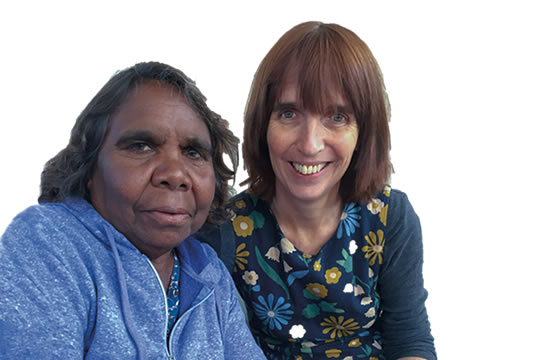 Artists from a remote Kimberley community dreamed of being able to care for their people on country and used their talents to fund that dream.
Artists from a remote Kimberley community dreamed of being able to care for their people on country and used their talents to fund that dream.
The important work of ‘Purple House’, a health service owned and run by Australia’s Western Desert Pintupi people began with an art sale.
Purple House CEO Sarah Brown said when people moved off country to Alice Springs for treatment for complicated conditions such as kidney disease they were terribly homesick and did not do well.
‘To have dialysis three times a week they had to stay in Alice, which is Arrentje country. They were very conscious of not being on their home land. Some people decided not to start treatment and pass away early on country. Even those who moved to Alice did really poorly. We had the worst survival rates on dialysis in the country,’ Ms Brown said.
COMMUNITY FUNDRAISING
The government’s refusal to fund a dialysis machine for Kintore [settlement about 550km west of Alice] so people could stay close to home, was a catalyst for community fundraising. In 2000 Papunya Tula artists from Walungurru and Kiwirrikurra developed four collaborative paintings which were auctioned at the NSW Art Gallery in 2000, and raised more than $1 million.
‘That gave people opportunity to come up with their own model of care that had their cultural priorities of family and country, dreaming and compassion,’ she said.
Visiting Melbourne, Ms Brown and Purple House treasurer and elder Marlene Spencer spoke about the organisation’s work to help those with kidney disease stay on country and the project has grown.
ORIGINAL PURPLE HOUSE
Ms Brown said they began with a machine in the back of the clinic in Kintore and one back bedroom of the original Purple House in Alice, which was rented from the NT government.
‘We started to get people home in 2004. Then a Rotary Cub from Canberra helped us redevelop an abandoned old people’s home.’
Ms Spencer retired as a community health worker in 2011. She started in the 1980s, working with a caravan radio with six car batteries to contact the Flying Doctor Service.
She said they had to make a bush fire so the plane could see the airstrip and take the sick person on the back of a tractor.
From the small beginnings, ‘Purple House’ now has dialysis in 14 remote communities, three in WA and the rest in the Northern Territory, and were building four more communities, including one in South Australia.
‘It is more than dialysis. It’s the other services that have grown up around it – primary care, social welfare, bush medicine, aged care. It’s about finding opportunities and filling gaps,’ Ms Brown said.
MEDICARE NUMBER
Purple House was delighted late last year when the federal government decided to provide a Medicare number for dialysis.
Ms Brown said the decision provided much needed funding.
‘Previously, we had to piece together funding for ongoing costs. Now, anyone supporting us will know our work is sustainable – that each dialysis will receive the Medicare dollars.
The real success of Purple House, however, is that Kintore has gone from having the worst dialysis rates to the best.
‘Aboriginal on dialysis with Purple House do better on average and live longer than Aboriginal on dialysis in Melbourne. We’ve closed the gap and gone beyond.
‘Also, people who get back to country, even for a couple of weeks for a couple of trips, have less than half the hospitalisations than those who don’t get back to country. That is real dollar savings,’ Ms Spencer said.
Ms Brown said Bush people gather at Purple House. They meet each other in the Purple House and use it as a base for other activities.
‘Got to be kind people – be brothers and sisters, even if we speak different languages, we are one. Purple House is a happy place, friendly place.’
www.purplehouse.org.au
Image: Marlene Spencer and Sarah Brown. By Michele Frankeni